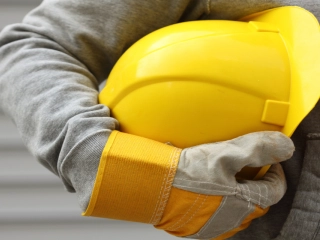Construction Pathway
Gain skills in manual handling, the safe handling of hazardous substances, safety on a construction site, and basic first aid to ensure workplace health and safety.

Construction Pathway
£49.95
+VAT
- Earn discounts
- Receive reminders
- Keep training records
- Track progress

PayPal Buyer protection
Highfield Awarding Body
Mobile device friendly content
Duration: 5 hrs
Retakes: Unlimited
Overview
Our construction pathway covers essential workplace safety practices, including proper manual handling techniques to prevent injuries, safe handling and storage of hazardous substances in compliance with COSHH regulations, and key health and safety protocols specific to construction sites. It also provides foundational first aid skills, preparing you to respond effectively to emergencies at work.
Candidates will undertake an online multiple-choice assessment and will receive a certificate if successful (any certificates from an official awarding body are sent to you via email).
Course Syllabus
-
Introduction, What is Manual Handling & Legal Requirements around Manual Handling
After setting the scene, we go on to explore the question of "what is manual handling?". It then goes on to look at the legal requirements, expectations and responsibilities around the subject.
-
Problems that can be caused by Incorrect Manual Handling & the Structure and Function of the Spine
Next, we look at the dangers of poor manual handling and possible musculoskeletal injuries that can result from it. To aid understanding of such injuries, the chapter also includes a section on the spine and how it attaches to muscle and bone.
-
Assessing the Risks before a Manual Handling Operation
We're now going to explore the manual handling task and conducting a risk assessment to ensure that the operation is conducted in a safe manner. This is probably the most crucial aspect of any manual handling operation.
-
Manual Handling Techniques
Next up are the various techniques that are considered to be good practice when carrying out manual handling tasks.
-
Manual Handling Risk Assessment
In this unit, we examine the employer's responsibilities under health and safety legislation for conducting manual handling risk assessments. It concludes, almost as course revision, with the Health and Safety Executive's own "Lifting Code".
-
The Importance of Health and Safety
This first unit covers the importance of health and safety.
-
The Reasons for Good Health and Safety
This section outlines the reasons for good health and safety.
-
Legal Responsibilities for Health and Safety
In this final unit of the module, we examine the legislation that underpins health and safety, as well as the responsibilities of employers and employees.
-
Introduction
This chapter gives a complete overview of the module.
-
Roles and Responsibilities
This chapter explains roles and responsibilities in relation to COSHH.
-
The COSHH Risk Assessment
This chapter explains the purpose of, and how to go about undertaking a COSHH risk assessment.
-
Hazardous Substances Part 1
This chapter is designed to provide you with an understanding of substances which are hazardous to health.
-
Hazardous Substances Part 2
This section continues to look at how hazardous substances can harm health.
-
Monitoring and Surveillance
This chapter explains how to keep everyone safe with monitoring and surveillance.
-
Alcohol and Drugs
This section looks at the possible adverse effects of alcohol and drugs in the workplace.
-
Health and Safety Signs; Personal Protective Equipment; Welfare Facilities & Personal Hygiene
In these sections, we cover health and safety signs, personal protective equipment (PPE), welfare facilities and personal hygiene respectively.
-
Emergencies & First Aid; Reporting Accidents & Ill-Health
This unit covers procedures for dealing with emergencies and the requirement to provide adequate first aid facilities. It then looks at the importance of accurately recording all accidents and incidents of ill-health, including legal requirements to report certain accidents and types of ill-health that originate in the workplace.
-
Aim and Purpose of First Aid
The chapter begins by setting out the scope, content and purpose of the course and then goes on to detail the legislation behind first aid provision in the workplace, defines what first aid is all about and describes the aim and purpose of first aid.
-
Expectations of a First Aider
This chapter highlights what is expected of a first aider in the workplace, including the attributes expected of a first aider.
-
Equipment & Infection
In this chapter, we explain what first aid equipment should be available in an average workplace and then go on to examine how infection can occur and how to minimise the risk of infection for the first aider, the casualty and others.
-
Getting Help
This chapter explores how to get help in a first aid situation. This includes help from passers-by, work colleagues, etc., as well as from health professionals and the emergency services.
-
Treatment of Minor Injuries
In this final chapter, we cover the treatment of minor injuries. These are by far the most common type of injuries that a first aider will be presented with in the workplace.
Popular Courses

Overview
This course combines The Digital College courses "Level One Award in Health and Safety in a Construction Environment" and "Preparation for the CITB health, safety and environment test" to enable you to attain a CSCS "Green Card" as quickly as possible. Nothing extra to pay; all training and exam costs included! You just pay for the card.

Overview
This is the official qualification required by local councils for anyone in England and Wales applying for a Personal Licence to serve or sell alcoholic drinks. This delivers the complete training package of online study, practice questions, an invigilated assessment and an official certificate to those that pass this qualification. The certificate can then be supplied to your local council as part of your Personal Licence application.

Overview
This bundle contains everything you need to gain a Personal Licence to authorise the sale of alcoholic drinks in England and Wales. This delivers the complete training package of online study, practice questions, an invigilated assessment and an official certificate to those that pass this qualification. We will then obtain a DBS certificate and apply to your local council on your behalf - saving you a lot of time and effort.

Overview
This Level 1 Award Health and Safety course and test, awarded by Highfield Qualifications and valid for your lifetime, is aimed at learners who currently work, or want to work, in construction. Successful completion will enable you to move on to take the CITB health, safety and environment test, and then apply for the new Construction Skills Certificate Scheme (CSCS) Green Card. This card allows access to construction sites in the UK as a non-skilled worker and is designed to improved overall site safety.

Overview
Our Level 2 Award An Introduction to First Aid for Mental Health qualification will increase your awareness of common mental health issues, such as anxiety, depression and stress, that can have an impact on our everyday lives. You'll also obtain knowledge on how a mental health first aider can provide immediate "on the spot" care to others, while looking after their own mental wellbeing. Upon successful completion of the invigilated assessments, you will receive an official certificate. This qualification incorporates the Level 1 Award An Introduction to Mental Health and Wellbeing qualification.

Overview
Our Level 2 Food Hygiene certificate course covers food hygiene, food hazards, food poisoning, how food becomes unsafe, personal hygiene, awareness of contamination, time and temperature factors, proper cleaning and sanitising, premises and equipment and food handling responsibilities. This is perfect for anyone preparing or handling food.
Construction Pathway
Gain skills in manual handling, the safe handling of hazardous substances, safety on a construction site, and basic first aid to ensure workplace health and safety.£49.95
+VAT







